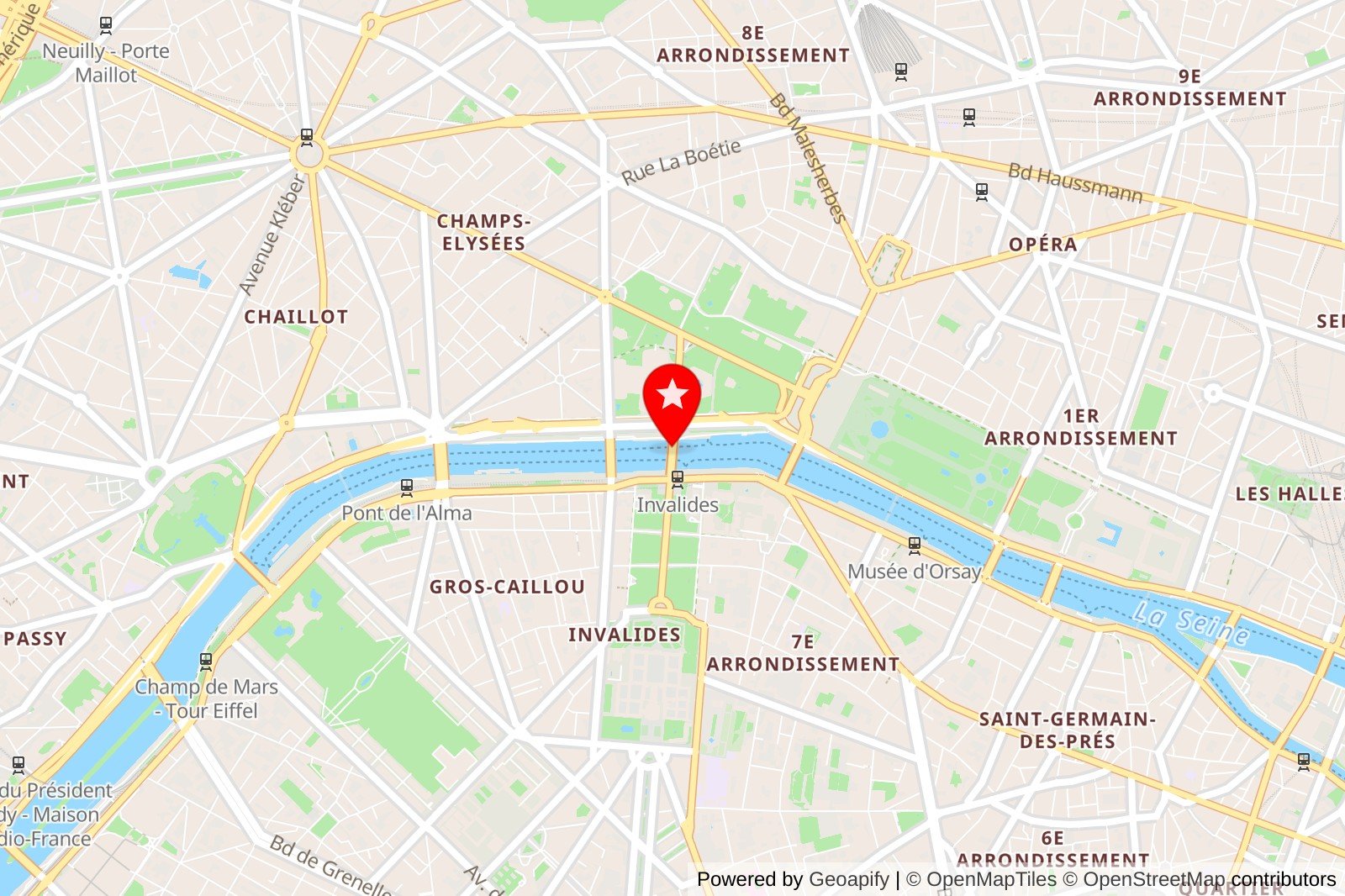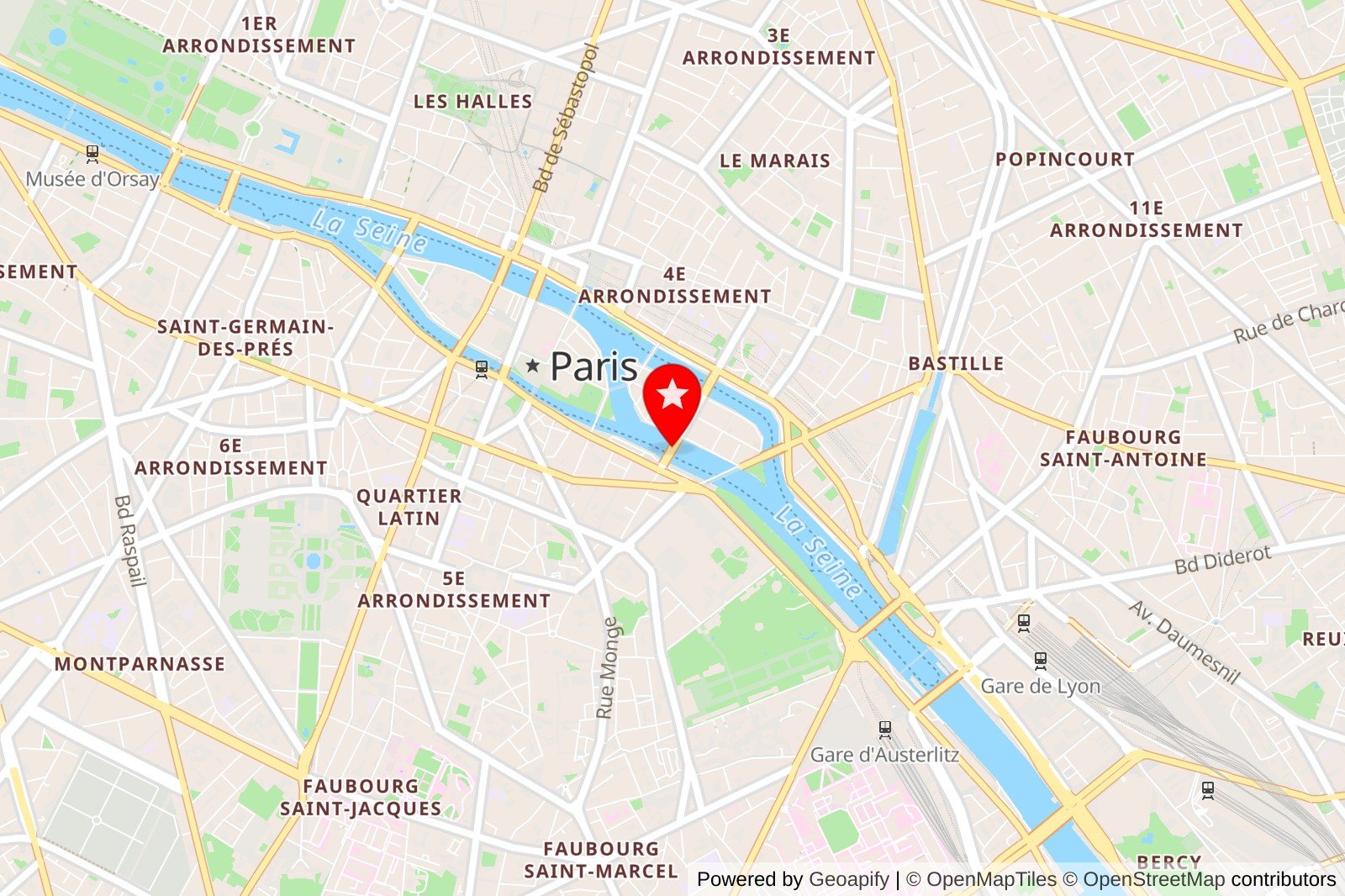When I think of Paris, the stunning bridges that span the Seine River immediately come to mind.
Each bridge has its own unique charm and history, making them much more than just pathways over water.
Exploring the best bridges in Paris offers a glimpse into the city’s rich culture and architectural beauty.
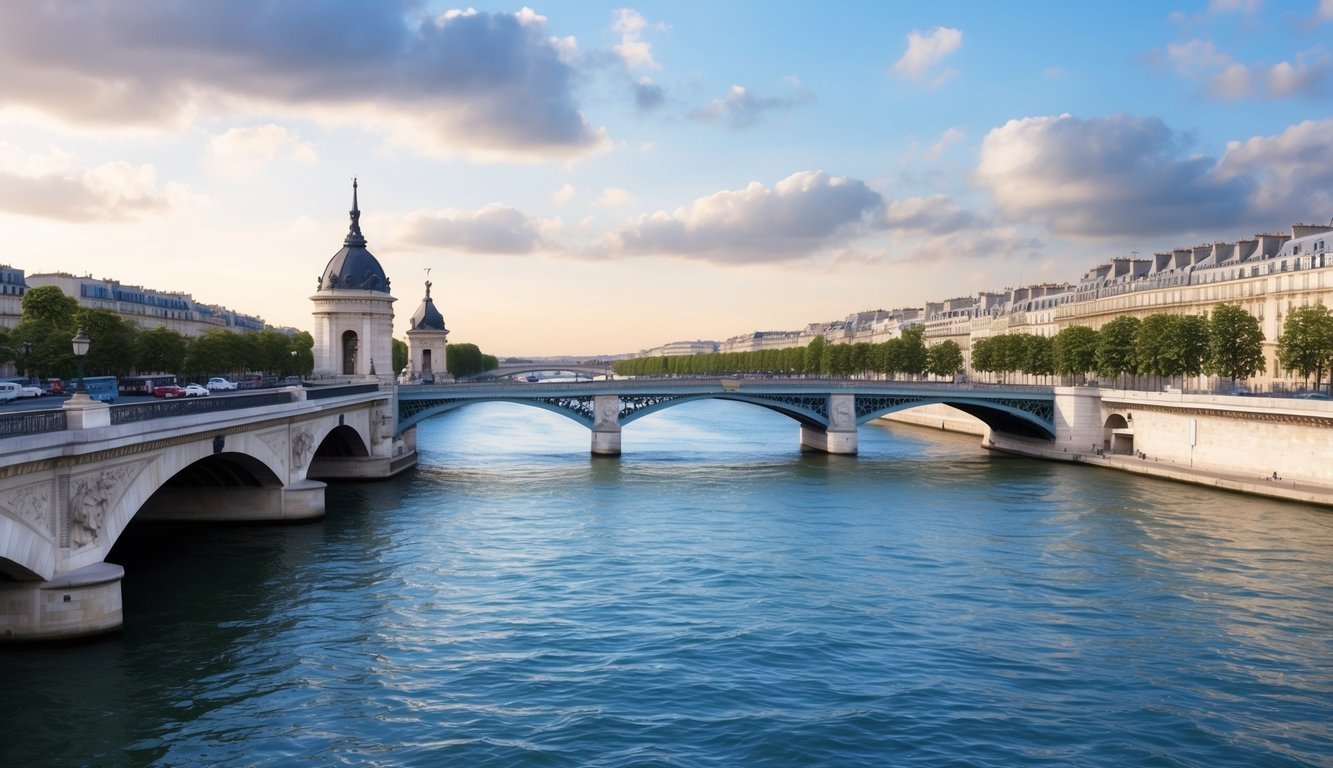
From simple footbridges to grand designs, these structures are often as captivating as the sights they connect.
Whether I’m wandering around as a tourist or just enjoying a day in the city, these bridges always stand out as must-see landmarks that enhance my experience in Paris.
1) Pont Alexandre III
Pont Alexandre III is one of the most beautiful bridges in Paris.
It was built for the 1900 Exposition Universelle, and its architecture is stunning and truly embodies the elegance of the Belle Époque.
The bridge connects the Invalides with the Grand and Petit Palais.
Its four towering pylons decorated with golden bronze pegasuses symbolize the Fame of Arts, Sciences, Commerce, and Industry.
The details are breathtaking and perfect for a leisurely stroll.
Walking across the bridge offers panoramic views of the Seine, the Eiffel Tower, and nearby landmarks.
Day or night, the scenery makes it a favorite spot for both locals and tourists seeking that perfect photo.
I enjoy visiting Pont Alexandre III, especially in the evening when the lights create a magical atmosphere.
Rating: 4.8 (34,000 reviews)
Location: Paris, France
Website: Visit Website
2) Pont Neuf
Pont Neuf is the oldest standing bridge in Paris, dating back to the 17th century.
I find it fascinating how this bridge connects the Île de la Cité to the rest of the city.
With its beautiful stone arches and classic design, it captures the essence of Parisian architecture.
Walking across Pont Neuf offers stunning views of the Seine River and the surrounding landmarks.
I often take a moment to admire the intricate sculptures and the vibrant energy of the people around me.
It’s a perfect spot to soak in the atmosphere of the city.
One unique feature is its name, which means “New Bridge.” The irony of naming such an ancient structure “new” always makes me chuckle.
Pont Neuf has served as a gathering place for locals and tourists alike for centuries.
I highly recommend visiting Pont Neuf whether you’re looking to take photos or just enjoy a leisurely stroll along the Seine.
Rating: 4.6 (20,000 reviews)
Location: 75001 Paris, France
Contact:
Website:
3) Pont des Arts
Pont des Arts is a charming pedestrian bridge that connects the Institut de France and the Louvre.
I love walking across it, especially with its lovely views of the Seine.
The atmosphere is always lively, with people taking pictures and enjoying the scenery.
This bridge has a rich history, originally built in the early 1800s.
It became a favorite spot for locals and tourists alike, known for its beautiful art installations.
I often find artists showcasing their work here, adding to the cultural vibe.
One of the unique features is the tradition of love locks, where couples would attach padlocks to the bridge and throw the keys into the river.
Although the locks are gone now, the romantic spirit remains.
It’s a great spot to sit and soak in the surroundings.
The bridge is easily accessible and serves as a perfect starting point for exploring the nearby attractions.
Rating: 4.6 (16,000 reviews)
Location: 75006 Paris, France
Website: Visit Website
4) Pont de la Tournelle
The Pont de la Tournelle is one of those charming spots in Paris that captures my interest every time I visit.
Built in 1928, this stone bridge was constructed to replace an earlier wooden structure.
It features a unique design with three elegant arches, the central one standing out at 74 meters wide.
As I’m walking across, I can’t help but admire the statue of Sainte-Geneviève, the patron saint of Paris, perched on one side.
The view of Notre-Dame Cathedral and the Île Saint-Louis from the bridge is simply stunning.
It’s a great place for photos or just soaking in the atmosphere.
This bridge not only connects the two banks of the Seine but also adds to the picturesque landscape of the city.
It’s less crowded than some of the other famous bridges, making it a peaceful spot to pause and take in my surroundings.
Whether I’m crossing it to explore nearby cafés or just enjoying the Seine’s beauty, the Pont de la Tournelle always leaves a lasting impression on me.
Rating: 4.5 (1700 reviews)
Location: Quai de la Tournelle, 75005 Paris, France
Website: Visit Website
Historical Significance of Parisian Bridges
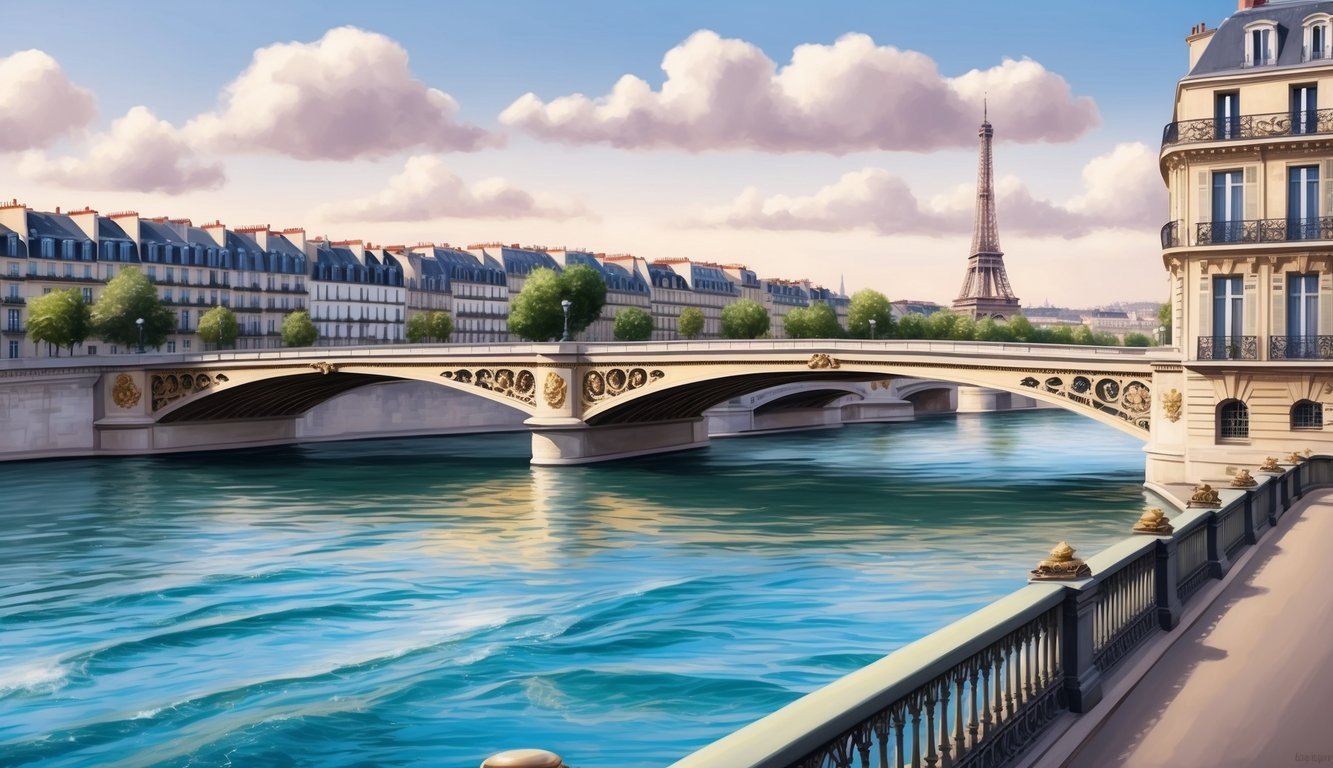
Parisian bridges are more than just pathways over the Seine; they embody the city’s history and charm.
Each bridge has a unique story and architectural style that reflects the era it was built in, contributing to the overall beauty of Paris.
Contribution to Paris’ Charm
Bridges in Paris are pivotal in creating the city’s picturesque landscape.
Take Pont Alexandre III, for example.
Its ornate design adds a touch of elegance and showcases the city’s artistic flair, which is why many consider it a must-see.
Pont Neuf, the oldest bridge, serves as a testament to Paris’s evolution since the 17th century.
These structures provide stunning views and picturesque photo opportunities, enhancing the romantic allure of the city.
Moreover, many bridges connect vibrant neighborhoods, making them essential for both locals and tourists.
They offer a delightful stroll while soaking in the historic atmosphere.
Architectural Evolution
Parisian bridges reflect changing architectural trends over centuries.
The Pont Neuf showcases early 17th-century design, with its stone arches creating a sense of stability and permanence.
In contrast, the Passerelle Simone-de-Beauvoir, designed by the Eiffel Company, exemplifies modern engineering.
Its sleek, minimalist structure contrasts with older, more ornate designs, representing a shift towards functionality.
Bridges like Pont de l’Alma also illustrate advancements in design.
With features like the Flame of Liberty, they fuse cultural symbolism with structural engineering, displaying a blend of history and modernity.
This diverse array of styles reveals the dynamic history of architecture in Paris.
Each bridge adds a unique layer to the city’s identity, capturing the spirit of its time.
Cultural Impact of Bridges in Paris

Bridges in Paris are more than just structures; they are integral to the city’s cultural tapestry.
From inspiring artistic creations to serving as backdrops for memorable films, these bridges tell stories that resonate with many.
Art and Literature References
Bridges like Pont Alexandre III have inspired artists and writers for centuries.
This stunning structure is often celebrated in paintings and photographs, showcasing its intricate design and picturesque setting.
Famous poets have also captured the essence of Parisian bridges in their works.
For example, in the poem “The Love Song of J. Alfred Prufrock” by T.S. Eliot, references to city landscapes evoke the emotions tied to connection and isolation.
Additionally, famous painters, such as Claude Monet, featured these bridges in their artwork, highlighting how they frame views of the Seine and its surrounding architecture.
The aesthetic beauty of these bridges enhances the cultural narrative and captures the spirit of Paris.
Filming Locations
Parisian bridges have made numerous appearances in film, often symbolizing love and connection.
The Pont des Arts is famously known as the “Love Lock Bridge.” It attracts filmmakers looking to capture romance in the city.
The Pont de Bir-Hakeim, known for its unique design, featured prominently in Inception and has been the backdrop for various love stories.
The view of the Eiffel Tower from this bridge adds to its cinematic charm.
Many films utilize these bridges to convey deeper themes—connecting character arcs to the city’s geographical and emotional landscape.
Each bridge not only enhances a scene’s visual appeal but also deepens the narrative, making them cultural icons in their own right.
Bridge Design and Construction
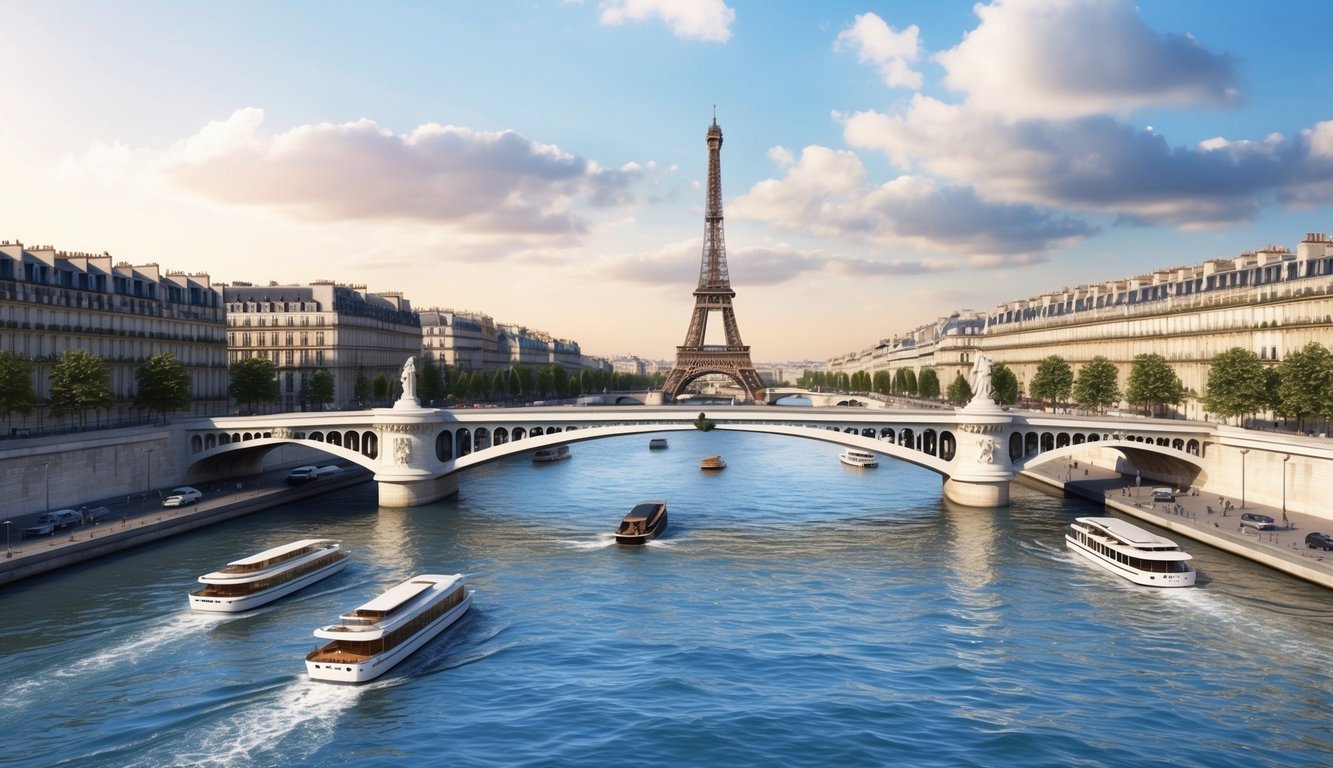
When I think about the bridges in Paris, I can’t help but appreciate the impressive materials and engineering innovations that have shaped their construction.
Each bridge tells a story through its design and the choices made by its builders.
Let’s dive deeper into what makes these structures so remarkable.
Materials Used Over Time
The materials used for building bridges in Paris have evolved significantly.
Early bridges, like the Pont Neuf, primarily utilized limestone and masonry.
This choice gave them a robust and timeless look, ensuring durability through the ages.
As technology advanced, iron became a favored material in the 19th century.
For instance, the Pont de Bir-Hakeim, completed in 1903, showcases iron’s strength and flexibility, allowing for intricate designs that were not possible before.
Today, modern bridges may incorporate composite materials and reinforced concrete, which provide a lightweight yet sturdy framework.
These materials enhance resilience while allowing for striking designs that capture the beauty of Paris.
Influence of Engineering Innovations
Engineering innovations have dramatically transformed bridge design in Paris.
The introduction of arch and suspension techniques allowed for longer spans and more elegant structures.
For example, Pont Alexandre III is a stunning showcase of arch design, with ornate embellishments that enhance its aesthetic appeal.
Advancements like computer-aided design (CAD) also play a role.
CAD enables architects to visualize and test their designs more accurately.
This technology has led to safer and more efficient bridges, allowing engineers to push creative boundaries.
The blend of aesthetics and engineering ensures that each bridge not only serves a purpose but also enhances the enchanting landscape of Paris.


